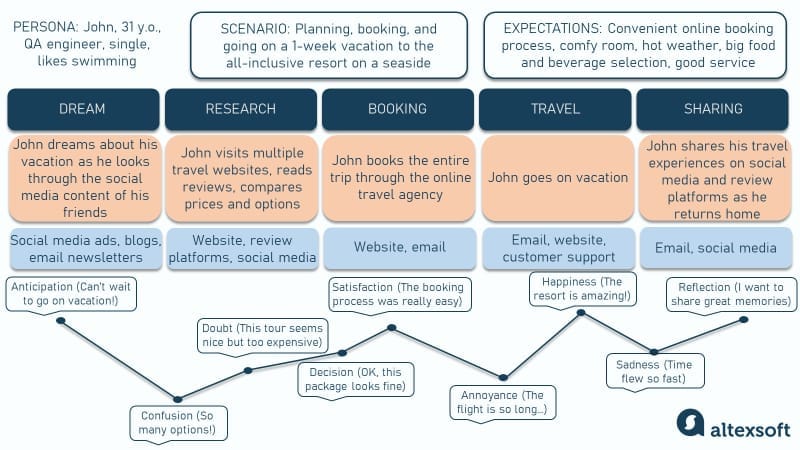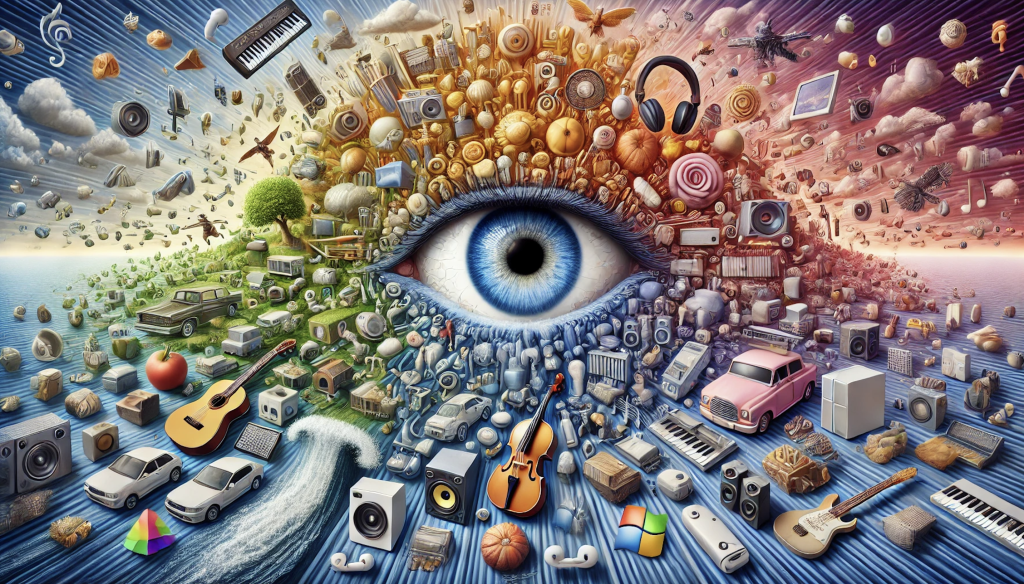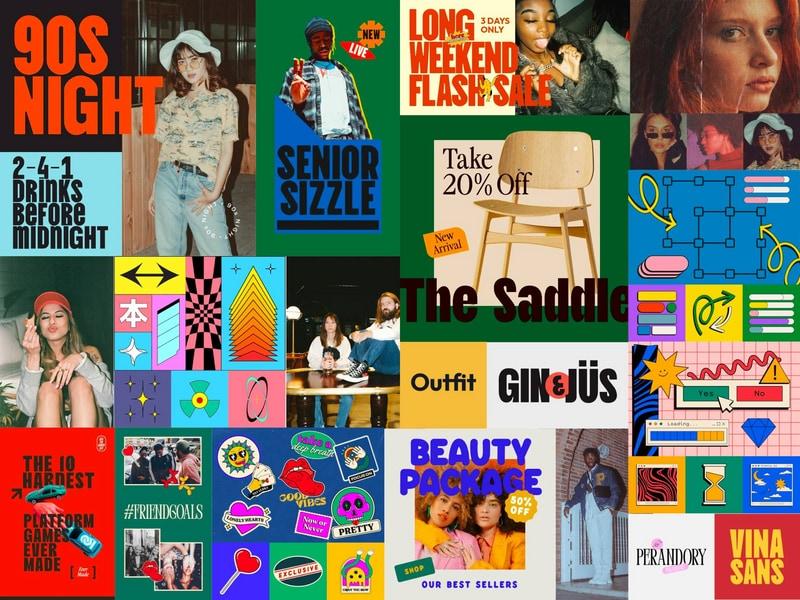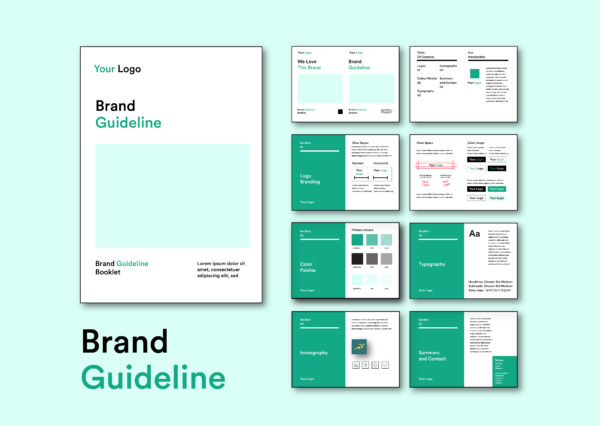Creating Memorable Experiences That Become Your Best Marketing Asset
Transform ordinary customer interactions into powerful marketing moments that sell themselves
The Psychology Behind Memorable Customer Experiences
I've always been fascinated by how emotional connections drive brand loyalty far beyond what traditional marketing can achieve. When I think about the brands I'm most loyal to, it's rarely about their advertisements – it's about how they made me feel during key interactions.
The Peak-End Rule
I've observed that we don't remember experiences in their entirety. Instead, our brains create memory shortcuts by focusing primarily on two key moments: the emotional peak (the most intense point) and the end of the experience. This psychological principle, known as the "peak-end rule," explains why final impressions disproportionately shape our memories and why a positive ending can salvage an otherwise mediocre experience.

Neurological Impact of Multi-Sensory Experiences
When we engage multiple senses, our brains form stronger neural connections, making experiences more memorable and easier to recall. I've found that brands creating multi-sensory moments – combining visual, auditory, and even olfactory elements – create more enduring impressions that customers naturally want to share.
Experience as a Differentiator
As products and services become increasingly similar, I've noticed that customer experience has emerged as the primary differentiator in crowded markets.
In my experience working with growing brands, I've found that PageOn.ai's Vibe Creation tool transforms abstract customer experience concepts into tangible visual strategies. This allows teams to align on the emotional tone and sensory elements that will define memorable customer interactions.
Crafting Your Experience Signature
I believe every successful brand has a unique experiential signature – distinctive elements that create recognition even without logos or explicit branding. Think about how you can identify an Apple store from its atmosphere alone, or how Starbucks creates a consistent sensory experience across thousands of locations.
Elements of an Experience Signature
I've found these core components form the foundation of any memorable experience signature:
flowchart TD
A[Experience Signature] --> B[Sensory Elements]
A --> C[Emotional Tone]
A --> D[Interaction Patterns]
A --> E[Spatial Design]
A --> F[Temporal Rhythm]
B --> B1[Visual Identity]
B --> B2[Sound Design]
B --> B3[Tactile Elements]
B --> B4[Olfactory Cues]
C --> C1[Core Emotions]
C --> C2[Emotional Arc]
C --> C3[Resolution Feeling]
D --> D1[Staff Behaviors]
D --> D2[Digital Interactions]
D --> D3[Feedback Loops]
style A fill:#FF8000,stroke:#333,stroke-width:2px,color:white
style B fill:#42A5F5,stroke:#333,stroke-width:1px
style C fill:#66BB6A,stroke:#333,stroke-width:1px
style D fill:#EC407A,stroke:#333,stroke-width:1px
style E fill:#AB47BC,stroke:#333,stroke-width:1px
style F fill:#FFA726,stroke:#333,stroke-width:1px
Techniques for Consistent Sensory Branding
I've learned that creating consistency across digital and physical touchpoints requires more than just visual coherence. It demands careful orchestration of all sensory elements to create a harmonious and recognizable experience.

Developing Experience Principles
In my work with clients, I emphasize the importance of aligning experience principles with your visual personal brand story. This creates a cohesive narrative that customers can connect with on a deeper level.
I find that using AI Blocks in PageOn.ai allows me to map customer journey touchpoints and their associated emotional responses, creating a comprehensive view of the experience landscape.
Case Studies: Recognizable Experiential Signatures
I've studied several brands that have mastered the art of creating instantly recognizable experiential signatures:
Disney
Meticulous attention to detail, "magic moments," and staff trained as "cast members" create an immersive storytelling environment.
Lush
Distinctive scent profile, hands-on product demonstrations, and conversational, non-pushy staff interactions form their signature.
Airbnb
Personalized digital touchpoints, local authenticity, and surprise welcome elements create memorable stays.
Tesla
Minimalist showrooms, educational rather than sales-focused interactions, and digital-first relationship building.
Storytelling as Experience Architecture
I've found that the most memorable experiences follow narrative structures that create emotional momentum. When we architect experiences with storytelling principles in mind, we tap into fundamental patterns that humans have responded to for thousands of years.
The Hero's Journey in Customer Interactions
I've successfully implemented the hero's journey framework in customer interactions by positioning the customer as the hero and our brand as the guide. This approach transforms mundane transactions into meaningful adventures where customers overcome challenges and achieve transformation.
For startup founders, I recommend startup storytelling techniques that transform products into meaningful experiences that resonate with both investors and customers.

Structural Elements of Experiential Storytelling
flowchart TD
A[Customer Experience Journey] --> B[Ordinary World]
B --> C[Call to Action]
C --> D[Crossing the Threshold]
D --> E[Tests & Challenges]
E --> F[The Reward]
F --> G[The Return]
G --> H[Transformation]
B -.-> B1[Pre-awareness state]
C -.-> C1[Marketing touchpoint]
D -.-> D1[First purchase/signup]
E -.-> E1[Product use/learning]
F -.-> F1[Value realization]
G -.-> G1[Advocacy/sharing]
H -.-> H1[Identity change]
style A fill:#FF8000,stroke:#333,stroke-width:2px,color:white
style B,C,D,E,F,G,H fill:#66BB6A,stroke:#333,stroke-width:1px
Creating Visual Narrative Maps
I use PageOn.ai to create visual narrative maps that identify emotional high points in the customer journey. This helps me design memorable "story moments" that customers will naturally want to share with others.
Story Moment Design Principles
- Create clear emotional contrast (tension followed by resolution)
- Incorporate an element of surprise or delight
- Ensure the moment aligns with your brand narrative
- Make the customer the hero of the moment
- Design for natural shareability
Visual Experience Design That Drives Word-of-Mouth
I've learned that visual processing is our most dominant sense, with our brains processing images 60,000 times faster than text. This makes visual experience design critical for creating memorable moments that customers will naturally share.
Visual Processing Impact on Memory
Creating Shareable Visual Moments
I focus on designing visual moments that naturally encourage social sharing. These "Instagram moments" aren't just beautiful – they're thoughtfully designed to communicate brand values while being inherently shareable.

Techniques for Impactful Visual Presentations
In my experience creating impactful product presentations, I've found that highlighting experiential benefits rather than technical features creates deeper emotional connections with audiences.
I regularly use PageOn.ai's Deep Search to integrate contextually perfect visuals that enhance my storytelling and make complex concepts more accessible and memorable.
Balancing Consistency with Surprise
I've discovered that the most effective visual experience design maintains brand consistency while incorporating strategic surprise elements. This balance creates a sense of familiarity that customers find comforting while delivering unexpected moments that generate delight and memorability.
Visual Experience Balance Framework
Consistency Elements (80%)
- Core brand colors and typography
- Logo treatment and placement
- Photography style and filters
- UI patterns and interaction design
- Voice and tone in visual messaging
Surprise Elements (20%)
- Seasonal or limited-time visual themes
- Unexpected interactive moments
- Personalized visual touches
- Collaborations with artists/creators
- Context-aware visual adaptations
Transforming Transactions into Memorable Moments
I believe that every customer interaction, no matter how mundane, contains the potential to become a memorable moment. The key is identifying the critical "magic moments" in your customer journey where experiential enhancements will have the greatest impact.
Magic Moment Mapping
flowchart LR
A[Awareness] --> B[Consideration]
B --> C[Purchase]
C --> D[Onboarding]
D --> E[Usage]
E --> F[Support]
F --> G[Loyalty]
B -.-> H((Magic Moment))
C -.-> I((Magic Moment))
D -.-> J((Magic Moment))
G -.-> K((Magic Moment))
style A,B,C,D,E,F,G fill:#66BB6A,stroke:#333,stroke-width:1px
style H,I,J,K fill:#FF8000,stroke:#333,stroke-width:2px,color:white
Identify critical points in the customer journey where emotional impact can be maximized
Experience Personalization That Feels Authentic
I've learned that effective personalization goes beyond simply inserting a customer's name. It requires understanding their context, preferences, and history with your brand to create moments that feel genuinely tailored rather than algorithmically generated.
Sales Presentations That Focus on Experiences
When developing sales presentation ideas, I shift the focus from features to experiences by telling stories about how customers will feel and what they'll accomplish, rather than listing specifications.
I find PageOn.ai's Agentic capabilities invaluable for visualizing potential customer experience innovations before investing in their development.

Measuring Experience ROI
I've developed a framework for measuring the return on investment of experience enhancements by tracking their impact on customer lifetime value metrics.
The Art of Experience Amplification
I've discovered that the most powerful marketing doesn't come from what we say about ourselves, but from what customers say about their experiences with us. By designing experiences specifically for sharing and advocacy, we can turn customers into our most effective marketing channel.
Creating "Talk Triggers"
I focus on developing strategic "talk triggers" – operational elements so remarkable that customers naturally want to tell others about them. These aren't gimmicks, but rather integral parts of the experience that generate organic conversation.

Leveraging Visual Storytelling
I've found that visual storytelling techniques make experiences significantly more shareable. When customers can easily capture and share visually compelling moments, they become natural brand ambassadors.
Using PageOn.ai to create visual experience maps helps me identify key amplification opportunities throughout the customer journey.
Effective Talk Trigger Characteristics
Remarkable
Must be genuinely worth remarking about – unusual enough to merit conversation
Relevant
Must connect to your core value proposition and brand identity
Reasonable
Must be financially sustainable as an ongoing operational element
Repeatable
Must be consistently delivered to every customer, every time
Restrictive
Must be something competitors either cannot or will not copy
Case Studies: Experience Evangelists
I've studied several brands that have successfully turned customers into experience evangelists:
| Brand | Talk Trigger | Amplification Result |
|---|---|---|
| Cheesecake Factory | Enormous menu with 250+ items | 38% of first-time customers mention the menu size to others |
| DoubleTree Hotels | Warm chocolate chip cookie at check-in | 34% of guests mention the cookie in online reviews |
| Five Guys | Extra fries always added to bag | Millions of social media mentions about "bonus fries" |
| Zappos | Surprise upgraded shipping | 25% increase in repeat purchase rate |
Building an Experience-Focused Organization
I've learned that creating consistently memorable experiences requires more than just isolated initiatives – it demands an organization-wide commitment to experience-centered thinking. This means aligning teams around experience principles rather than departmental metrics.
Experience-Centered Organizational Structure
flowchart TD
A[Customer Experience Vision] --> B[Experience Principles]
B --> C[Experience Metrics]
B --> D[Marketing]
B --> E[Product]
B --> F[Sales]
B --> G[Support]
B --> H[Operations]
D --> I[Shared Experience Data]
E --> I
F --> I
G --> I
H --> I
I --> J[Experience Evolution]
J --> B
style A fill:#FF8000,stroke:#333,stroke-width:2px,color:white
style B fill:#FF8000,stroke:#333,stroke-width:2px,color:white
style C,D,E,F,G,H,I,J fill:#66BB6A,stroke:#333,stroke-width:1px
Experience Prototyping and Testing
Before fully implementing experience changes, I advocate for rapid prototyping and testing with real customers. This approach allows for iteration and refinement based on actual customer feedback rather than internal assumptions.
Visual Experience Guidelines
I develop comprehensive visual experience guidelines that maintain consistency across all touchpoints while still allowing for contextual adaptation.
PageOn.ai has been invaluable for visualizing customer experience data in ways that create organization-wide alignment and understanding.

Implementing Feedback Loops
I believe that experiences must continuously evolve based on customer feedback and changing expectations. Implementing robust feedback loops ensures that your experience remains relevant and impactful over time.
Transform Your Visual Expressions with PageOn.ai
Ready to create memorable experiences that sell themselves? PageOn.ai helps you visualize customer journeys, design emotional touchpoints, and craft visual stories that turn customers into advocates.
Start Creating with PageOn.ai TodayCrafting Your Experience Strategy
I've found that memorable experiences don't happen by accident – they're the result of intentional design, consistent execution, and continuous refinement. By applying the principles and techniques we've explored, you can create experiences that naturally inspire customers to become your most powerful marketing channel.
Remember that the most effective experiences are those that align with your brand's unique values and purpose. Don't simply copy what others are doing – identify the authentic moments that only your brand can deliver.
As you begin developing your experience strategy, consider using PageOn.ai to visualize your customer journey, identify key emotional touchpoints, and design memorable moments that will drive organic growth through word-of-mouth. The right visual tools can transform abstract experience concepts into tangible strategies that your entire organization can rally behind.
You Might Also Like
From Slides to Stories: Transform Presentations into Purpose-Driven Visual Experiences
Discover how to move beyond traditional PowerPoint presentations to create purpose-driven visual experiences that engage audiences, drive action, and leave lasting impact.
From Status Quo to Solution: Crafting the Perfect Pitch Narrative Arc | PageOn.ai
Learn how to transform your business presentations with powerful status quo to solution narratives. Discover visual storytelling techniques that captivate investors and stakeholders.
From What to Why in Business Presentations: Purpose-Driven Storytelling Strategy
Transform your business presentations from data-heavy information delivery to purpose-driven storytelling that engages audiences and drives decisions with these expert strategies.
Mastering FOMO Psychology: Creating Irresistible Business Pitch Strategies | PageOn.ai
Learn how to leverage FOMO psychology in your business pitches to drive urgent action. Discover proven strategies for creating authentic scarcity, exclusivity, and urgency that converts.
